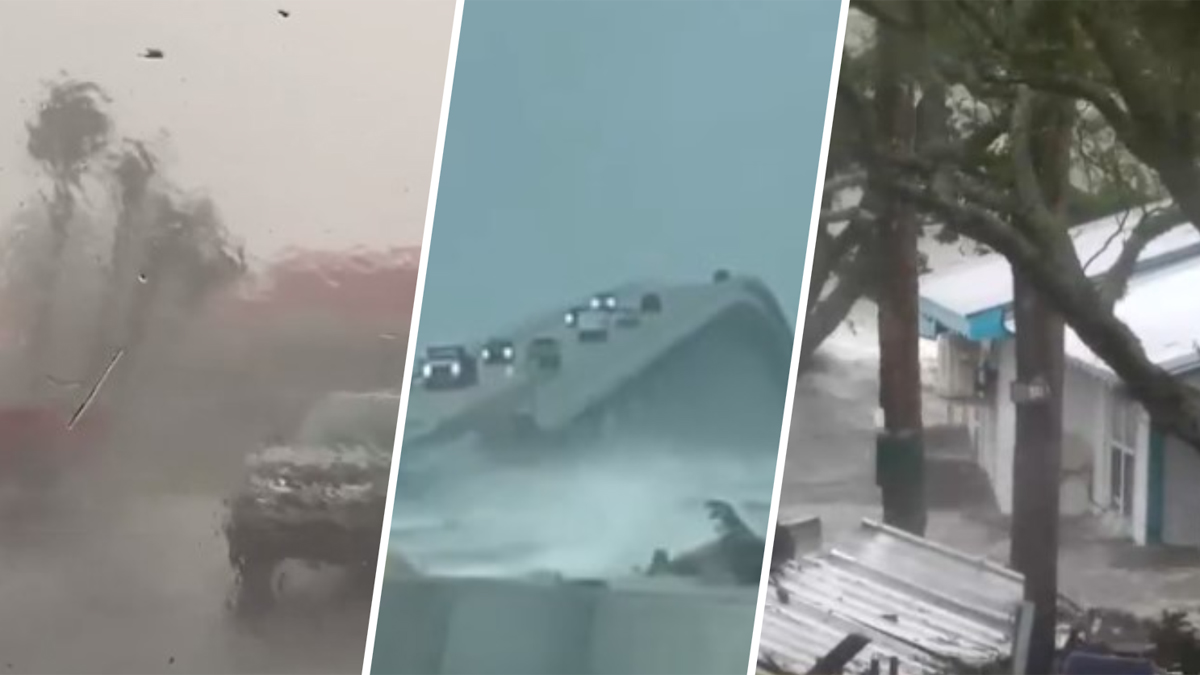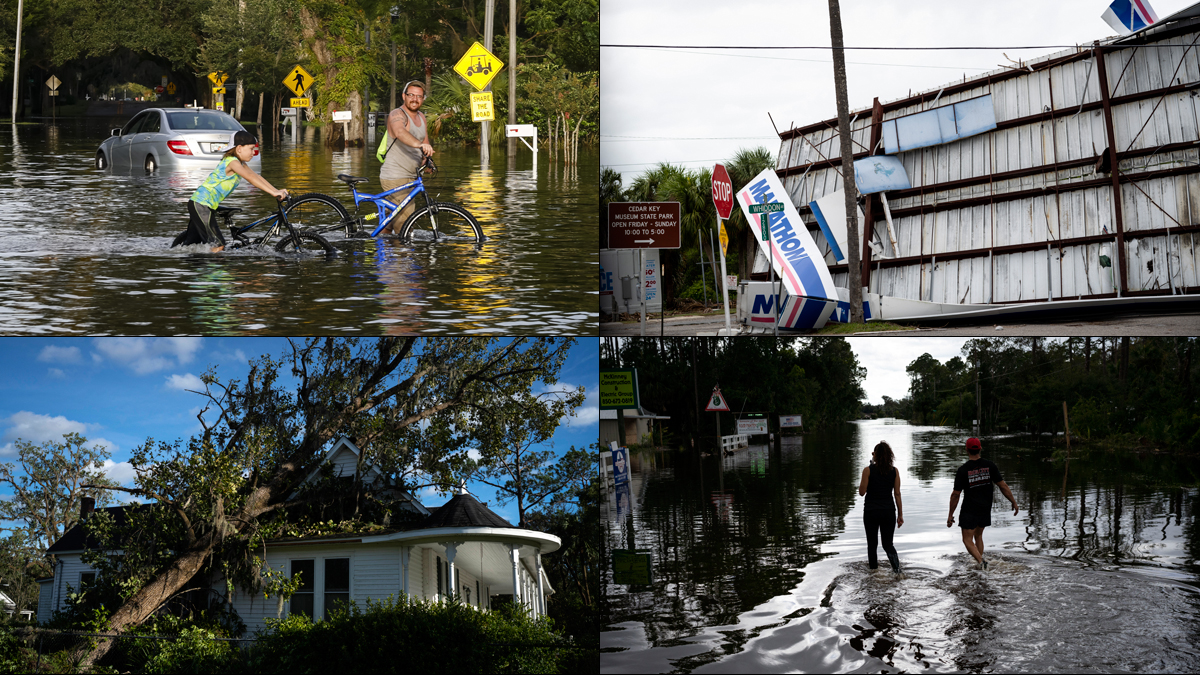Recovery efforts were continuing in Florida Thursday, just a day after Hurricane Idalia roared ashore as a powerful Category 3 storm, leaving heavy flooding, knocking out power to more than 500,000, and causing extensive damage.
Idala made landfall Wednesday morning along Florida's remote Big Bend area, pummeling the area with 125 mph winds.
Watch NBC6 free wherever you are
At a news conference Thursday morning, Florida Gov. Ron DeSantis said response operations were still ongoing in the area, including search and rescue and debris removal.
"There has been significant damage, particularly along Florida's Big Bend, but the community's resilient and we're going to work hard to make sure people get what they need," DeSantis said.
Get local news you need to know to start your day with NBC 6's News Headlines newsletter.
IDALIA LATEST
As of Thursday afternoon, just one storm-related death had been confirmed in the state, which was a traffic fatality in Alachua County, DeSantis said.
DeSantis said as of Wednesday night, around 40 rescues had been made of people who found themselves trapped. Crews were still conducting highwater and welfare checks on Thursday.
Power had been restored to more than 400,000 who lost it during the storm, DeSantis said, but more than 100,000 were still waiting for their power to be restored Thursday evening.
"There will be significant progress within 48 hours," DeSantis said. “I don't think that we'd be in a position to say that it could be fully restored, just simply because if there's structural damage you are going to have to rebuild some of that stuff. If it's a reconnect, we've got the people there."
The bulk of the outages were in the Big Bend area. That area, where the Florida Panhandle curves into the peninsula, saw streets turned into rivers that submerged cars and homes, while the howling winds tore off roofs, snapped tall trees, sent sheet metal flying and shredded homes.
“All hell broke loose,” said Belond Thomas of Perry, a mill town located just inland from the Big Bend region. Thomas fled with her family and some friends to a motel, thinking it would be safer than riding out the storm at home but the roof was torn away and debris showered onto her pregnant daughter, who fortunately wasn’t injured, Thomas said.
At Horseshoe Beach in central Big Bend, Jewell Baggett picked through the wreckage and debris of her mother’s destroyed home, finding a few pictures and her mother’s pots and pans.
Her grandfather built the home decades ago and it had survived four previous storms, she said.
“And now it’s gone,” she said. “Nothing left. A few little trinkets here and there.”
Baggett, whose mother had left before the storm hit, said at least five or six other homes also were destroyed.
In Tallahassee, the power went out well before the center of the storm arrived, but the city avoided a direct hit. A giant oak tree next to the governor’s mansion split in half, covering the yard with debris.
State officials, 5,500 National Guardsman and rescue crews went into search-and-recovery mode, inspecting bridges, clearing toppled trees and looking for anyone in distress. More than 30,000 utility workers gathered to repair downed power lines and poles.
DeSantis requested and received a major disaster declaration from the federal government for the 25 counties that had been under a hurricane warning. The declaration will assist with debris removal and individual assistance including providing shelter and temporary housing for those impacted.
Federal Emergency Management Agency Administrator Deanne Criswell, who attended the Thursday morning news conference with DeSantis, had said the declaration was being quickly processed.
DeSantis and Criswell planned later Thursday to “see first-hand" the destruction left behind by Idalia.



